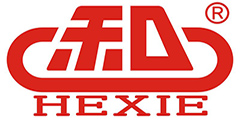News
Effect of Ingredients and Processing Parameters on Pellet Quality
In contrast to the effect of increasing protein, increasing the oil content had a negative effect on pellet quality. However, the pellet durability decreased greatly as the oil content reached 7.5%. Ration 1 had an oil content of 6.2% because of soybean oil added to the ration, which resulted in an overall average PDI of 57.2. The low PDI for Ration 1 was due to a combination of low protein and high oil content. Based on the findings of this work, pellet quality is not compromised when the oil content is below 5.6% and the protein content is about 20%. Evaluated the effects of adding animal fat to a corn-soy broiler finisher diet that originally contained 2.9% fat. After the addition of fat to the rations prior to conditioning, the fat contents ranged from 3.9 to 7.9%, with corresponding PDI ranging from 82.0 to 49.2, respectively. Fat content totaling above 4.9% yielded poor quality pellets.
The degree of pitch on the mixing paddles also affected pellet quality . The PDI produced with the parallel pitch paddles averaged five points higher than durabilities of pellets conditioned using the standard pitch. The longer residence time obtained using the parallel pitch allowed the mash to be more adequately.
The negative relationship of the rate of fines produced to the pellet durability index . conditioned prior to pelleting. Based on these findings, operators should adjust the configuration of the mixing paddles to obtain an optimum residence time to produce
quality pellets. Alternative methods for increasing the residence time are to decrease the rotational speed of the mixing paddle axle or to invest in longer length conditioners.
The degree of pitch on the mixing paddles also affected pellet quality . The PDI produced with the parallel pitch paddles averaged five points higher than durabilities of pellets conditioned using the standard pitch. The longer residence time obtained using the parallel pitch allowed the mash to be more adequately.
The negative relationship of the rate of fines produced to the pellet durability index . conditioned prior to pelleting. Based on these findings, operators should adjust the configuration of the mixing paddles to obtain an optimum residence time to produce
quality pellets. Alternative methods for increasing the residence time are to decrease the rotational speed of the mixing paddle axle or to invest in longer length conditioners.



